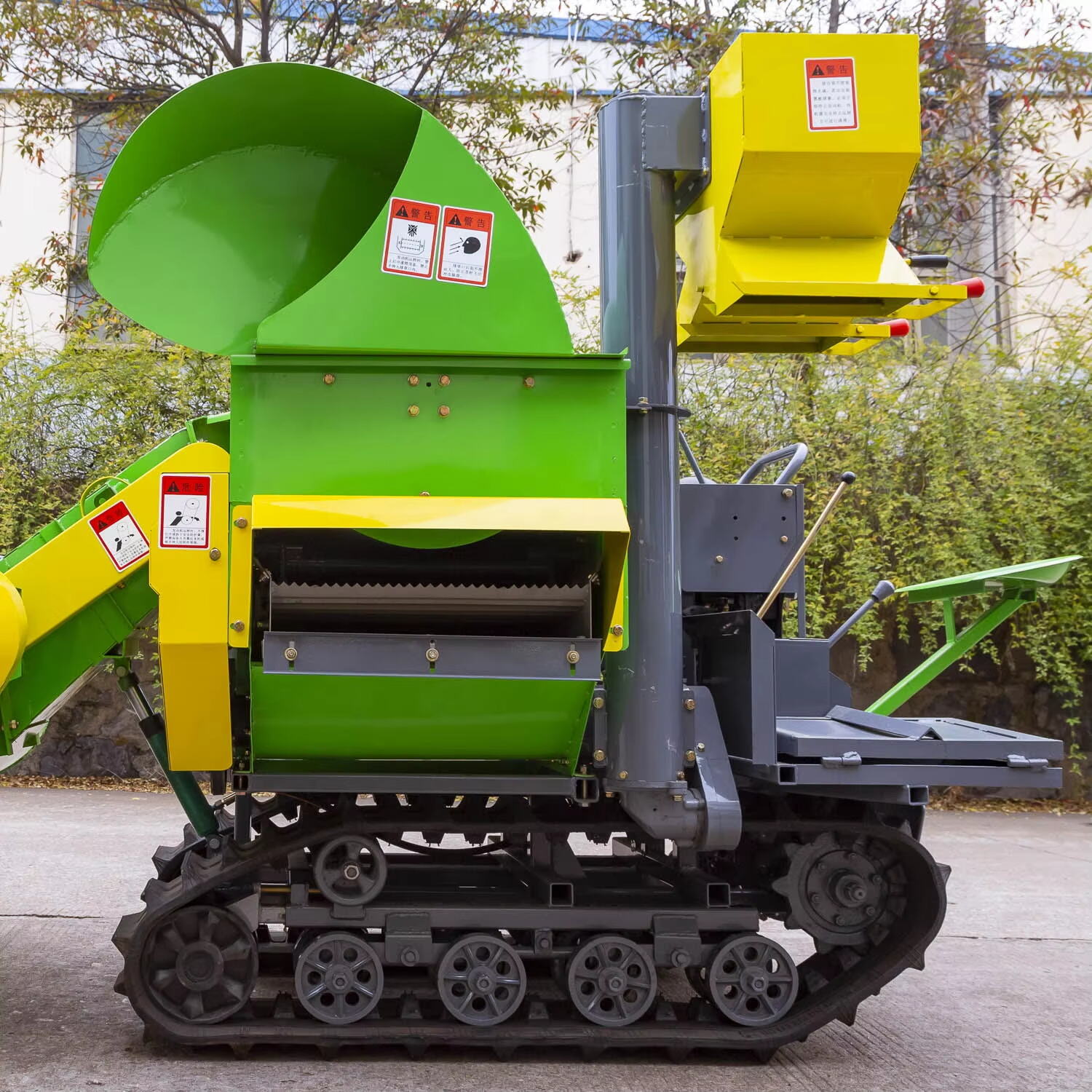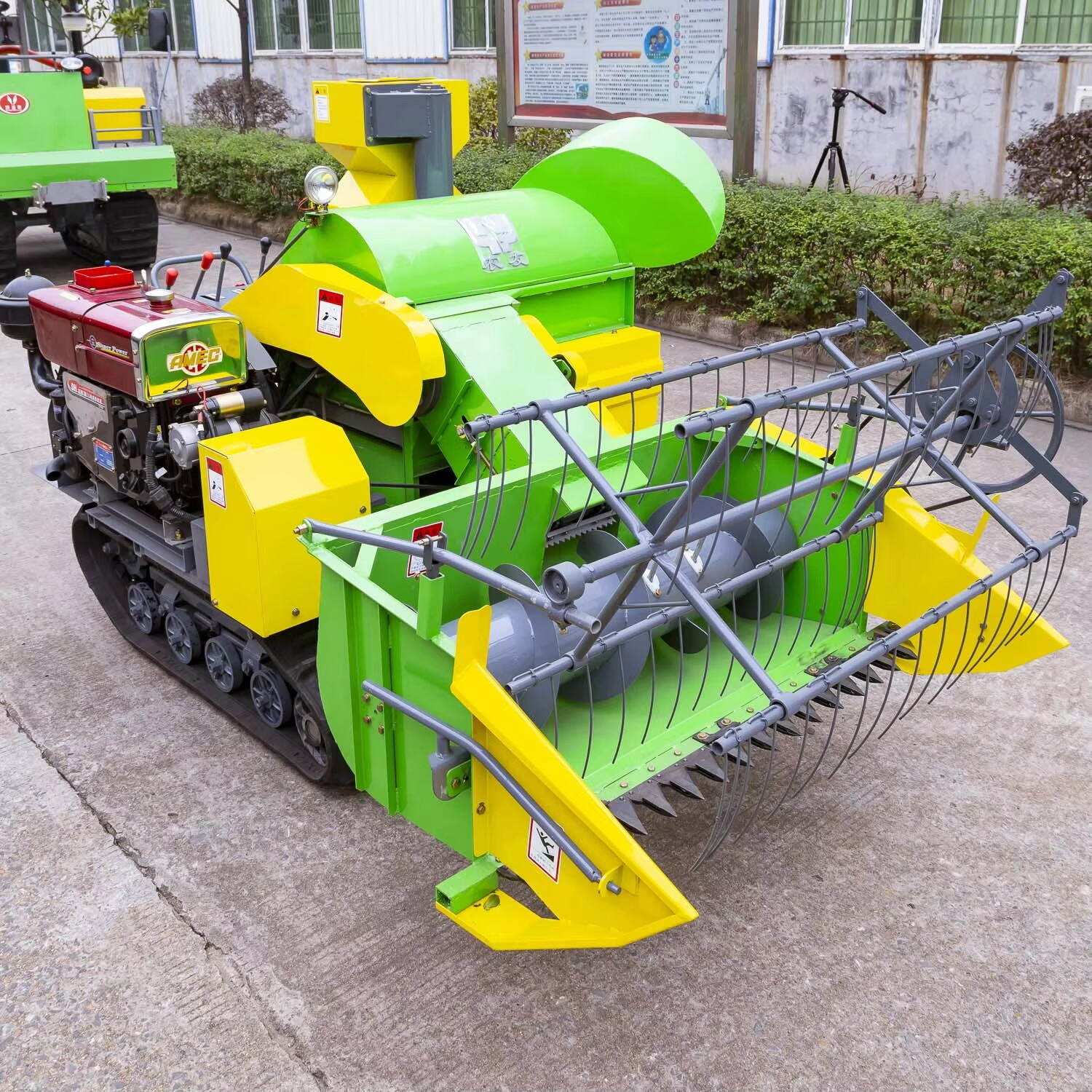Compact Power for Demanding Fields
Soybean farming isn't limited to sprawling, flat plains. Many growers operate on smaller plots, irregular fields, or hilly landscapes where traditional harvesting machines might not deliver optimal results. In such environments, choosing the right soybean harvesters becomes crucial to maximize productivity and preserve the land's condition. Machines must navigate tight turns, manage inclines, and maintain stability without sacrificing harvest efficiency.
Modern soybean harvesters are no longer one-size-fits-all. Advances in technology and design now offer specialized equipment built for adaptability, enabling small-scale and terrain-challenged farmers to harvest just as efficiently as large-scale producers. Whether you deal with sloped fields or segmented plots, selecting a machine suited for your unique terrain is the first step toward improving overall yield and reducing maintenance demands.
Terrain Challenges for Small and Hilly Farms
Navigating Tight Corners and Narrow Passages
Small plots often feature restricted turning space, awkward borders, and obstacles that demand nimble maneuverability. Soybean harvesters designed for these conditions typically offer compact dimensions and enhanced steering systems. These features allow machines to perform clean turns and maintain consistent harvesting width even in confined sections of the field.
Reduced-width headers and automatic contour-following systems also assist in managing uneven borders, ensuring minimal crop loss. The right equipment adapts seamlessly to each field's shape, rather than forcing farmers to restructure their plots to suit a machine.
Managing Slopes and Elevation Variations
Hilly areas require soybean harvesters that can handle elevation changes without compromising stability or harvest quality. Tracked machines often outperform wheeled models in such terrains due to their lower center of gravity and superior traction. These machines grip the ground firmly, preventing slippage and improving safety.
Self-leveling systems and slope sensors allow harvesters to adjust dynamically as they move uphill or downhill. These features not only ensure efficient harvesting but also minimize strain on mechanical components, which is critical for long-term reliability.
Choosing Between Wheeled and Tracked Models
Tracked Harvesters for Enhanced Stability
Tracked soybean harvesters are a top choice for farmers working in uneven or erosion-prone areas. The continuous tracks distribute weight evenly, reducing soil compaction and maintaining traction on slopes. This makes them particularly useful during rainy seasons or in fields with soft soil.
While these machines often come at a higher initial cost, their performance and durability on hilly terrain justify the investment. Additionally, the reduced likelihood of becoming stuck or damaging the field lowers maintenance and recovery costs over time.
Wheeled Harvesters for Firm, Dry Ground
In contrast, wheeled soybean harvesters offer greater speed and efficiency on firm, flat terrain. They tend to be more affordable and easier to maintain than tracked versions, making them ideal for farmers with limited budgets or less challenging landscapes.
Modern wheeled machines also come with features like flotation tires and improved suspension systems that help reduce soil impact. When used on the appropriate terrain, they provide excellent harvest performance with less fuel consumption.
Equipment Size and Field Compatibility
Compact Designs for Limited Space
Many small-plot farmers benefit from compact soybean harvesters that prioritize mobility and simplicity. These machines are built to access hard-to-reach sections without damaging surrounding crops. Their lighter weight also reduces rutting and soil disruption in sensitive areas.
Compact harvesters are typically easier to transport, store, and service. For farms where machinery must travel between non-contiguous fields or navigate narrow access paths, these advantages are significant. Manufacturers now offer compact versions without compromising on engine power or grain handling capacity.
Large Units in Segmented Fields
In some cases, larger farms with irregularly shaped plots can still make use of full-sized soybean harvesters. The key lies in choosing models with precision control systems and segmented harvesting capabilities. These systems allow for partial header engagement, so operators can match harvesting width to field shape without waste.
GPS-guided steering and automated path planning further help manage complex field layouts. Though physically larger, these machines are becoming increasingly intelligent, giving them a place even in fields once considered unsuitable for such equipment.
Operator Comfort and Usability
Enhanced Cab Design for Longer Working Hours
Working on difficult terrain requires focus and endurance. Today's soybean harvesters are equipped with ergonomic cabins, intuitive controls, and noise-reducing insulation. Adjustable seating, climate control, and advanced displays contribute to reduced operator fatigue.
Some models also include vibration dampening and suspension systems within the cab itself. These features are particularly useful when operating on bumpy or inclined fields, making long harvest days more manageable and productive.
Automation and Driver Assistance Technologies
Automation has revolutionized the usability of soybean harvesters, particularly in challenging terrain. Features like automatic speed adjustment, crop flow sensors, and headland turning assist reduce the cognitive load on the operator.
Self-driving capabilities are becoming more common, allowing farmers to focus on performance monitoring rather than constant manual adjustments. These smart systems help maintain harvesting precision and reduce errors, even in tight or sloped fields.

Maintenance and Durability in Varied Terrain
Protective Features Against Debris and Mud
Harvesting in non-ideal terrain increases exposure to obstacles like rocks, mud, and plant residue. Soybean harvesters built for such conditions often include reinforced guards, sealed engine compartments, and high-clearance chassis designs.
Tracked versions generally handle these conditions more gracefully, as their design naturally prevents debris entanglement and minimizes damage to undercarriage components. Wheeled machines require more frequent cleaning but remain effective with regular maintenance.
Simplified Access and Daily Servicing
Maintenance routines are easier to manage when machines offer tool-free access panels, centralized lubrication points, and remote diagnostics. These features reduce downtime and ensure quick troubleshooting when issues arise during critical harvesting windows.
Both tracked and wheeled soybean harvesters now include daily maintenance checklists accessible via onboard digital displays. These checklists guide operators through inspections and alert them to potential issues before they become costly problems.
Technology Integration for Better Adaptability
Terrain Mapping and Yield Monitoring
Integrating mapping software allows soybean harvesters to collect real-time data on field topography, crop health, and yield. This information helps farmers make better planting and irrigation decisions for the following season.
Terrain data also enables smarter navigation during harvesting. Machines equipped with terrain-responsive controls automatically adapt speed, header height, and engine load to match current field conditions.
Connectivity and Remote Management
Many modern soybean harvesters now offer remote monitoring capabilities. Operators and farm managers can access machine data, track progress, and receive maintenance alerts through mobile apps or cloud-based platforms.
This connectivity enhances decision-making and supports predictive maintenance. It’s especially beneficial for farmers managing multiple plots with different terrain types, enabling efficient fleet coordination and task scheduling.
FAQ
What type of soybean harvester works best on hills?
Tracked soybean harvesters offer better traction and stability on slopes, making them ideal for hilly terrain.
Are compact harvesters suitable for professional use?
Yes, modern compact soybean harvesters come with powerful engines and smart features, providing professional-grade performance on smaller fields.
Can wheeled machines handle muddy terrain?
While possible, wheeled harvesters may struggle in muddy conditions. Tracked models are better suited for wet or soft soils.
How important is automation in small or irregular fields?
Automation significantly enhances precision and reduces operator workload, especially in challenging or non-linear field layouts.

